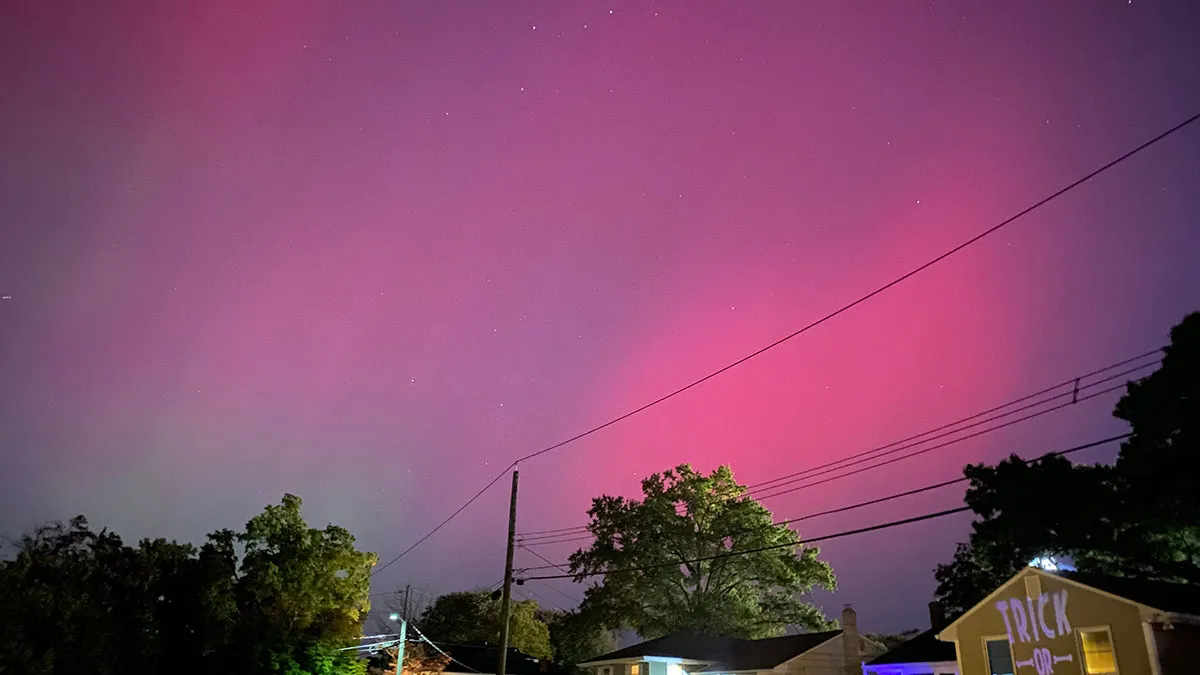On Thursday, October 10, many residents of Tenafly were surprised to look out the window and see the night sky filled with pink, purple, and green streaks. This natural phenomenon, the northern lights, became visible throughout New Jersey, New York, and parts of Pennsylvania at around 8 pm ET. The lights were especially clear in dark regions that faced the northwest.
Northern Lights, or Aurora Borealis, occur when charged solar particles collide with Earth’s magnetic field. The Earth is protected by the magnetosphere, which deflects most of these solar particles. However, sometimes, the magnetic field is weaker near the poles, allowing some particles to enter the atmosphere, where they interact with gases like oxygen and nitrogen. This is why the lights are typically seen only in high-latitude areas.
When solar winds reach Earth, they carry these particles toward the Earth’s poles, and then they collide with atoms in the atmosphere. These collisions excite the atoms, meaning the electrons in the atoms are temporarily bumped to higher energy levels. As the electrons return to their original energy levels, they release energy in the form of photons, creating the breathtaking displays in the night sky. The most common colors are green, but pink, red, purple, and even blue hues can be seen. Green is the most common color, caused by oxygen atoms at altitudes of about 60 miles. Red is produced by oxygen at higher altitudes (above 150 miles), though this is much rarer. Blue and purple are created by interactions with nitrogen molecules, usually lower in the atmosphere.
Although northern lights have occurred previously in New Jersey, the sighting is typically more common in Canada, Russia, and the Scandinavian countries. According to Northjersey.com, the lights were visible due to a coronal mass ejection, an “eruption of solar material and magnetic fields.” When this event occurred, it resulted in a geomagnetic storm that allowed the northern lights to be visible in parts of the world that rarely encounter them.
While the geomagnetic storm resulted in a visible aurora, NOAA’s Space Weather Prediction Center also warned of the possible effects a storm may have on infrastructure technology such as GPS systems and radio communication.
The best place to witness the northern lights is in the “auroral zone,” a region within 1,550 miles of the North Pole, according to the Tromsø Geophysical Observatory. This area sees the most frequent auroras, though strong solar winds can extend the display further south. To get the best view of the northern lights, it’s important to be in a dark location far from city lights. While it can be difficult to access remote Arctic areas, some accessible locations with good infrastructure include Fairbanks (Alaska), Yellowknife (Canada), Tromsø (Norway), and various spots in Iceland. The prime time for viewing is between September and April, when the nights are longest and there is enough darkness to see the aurora – typically from 9 pm to 3 am. Avoid places with constant daylight, like during the summer in far northern regions.
While it is uncertain when the next northern lights will appear on New Jersey’s sky and become visible from Tenafly, the October 10 event was a stunning sight and remarkable occurrence. Now, many of our camera rolls are filled with live images of a natural phenomenon taken right from our backyards.















